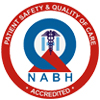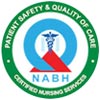
Are there different kinds ofsurgery?
Yes. Traditional open surgery, where your surgeon operates through a long incision (cut), may be the first method that comes to mind. However, you may be a candidate for minimally invasive surgery, which requires just one or a few smallcuts.
Opensurgery
Surgeons make incisions large enough to see the entire surgery area and perform the procedure using hand-held tools.
Minimally invasive surgery includes:
Traditional laparoscopic surgery
Surgeons perform laparoscopic surgery using special long-handheld tools while viewing magnified images from the laparoscope (camera) on a video screen.
Robotic-assisted surgery
While the word “robotic” is in the description, a robot doesn’t perform surgery. Your surgeon is the one performing surgery using the Robot andinstruments.
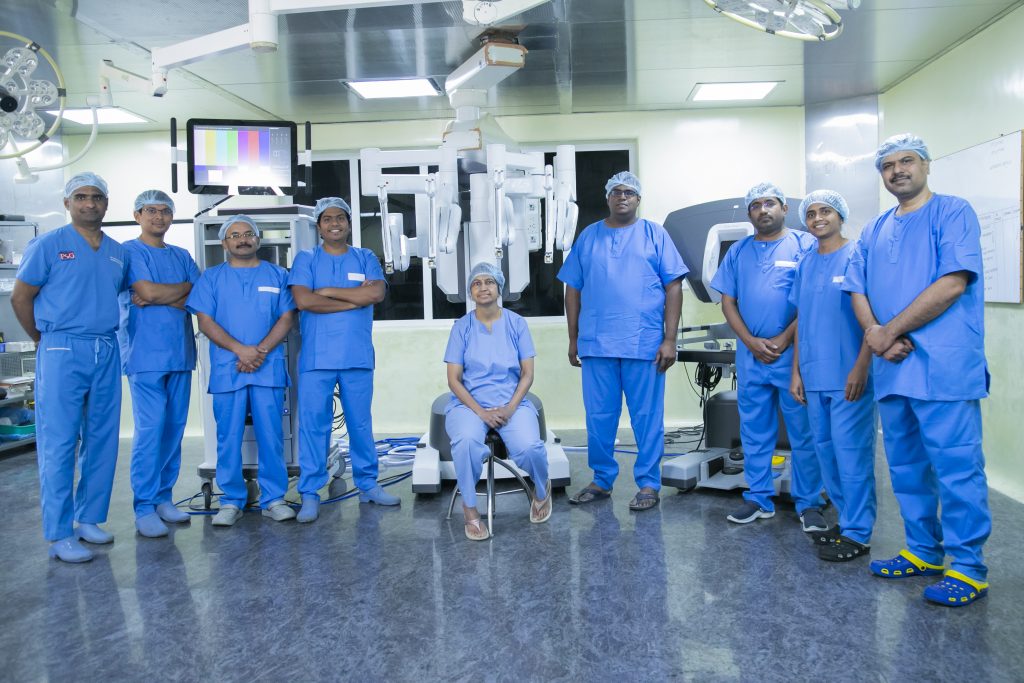
Why your doctor may recommended robotic-assisted surgery
Just as technology, such as MRI and CT scanners, enhances doctors ‘skills beyond what the human body allows, robotic-assisted surgery extends the capabilities of a surgeon’s eyes and hands.
Stays with you in the operating room and useshisorherhandstocontrolacameraand
surgical instruments to perform the procedure.
Views the entire operation in 3DHD, Giving your surgeon a clear view of the surgical area that is magnified 10 times to what the human eye sees.
Uses tiny instruments that move like a human hand but with on even greater range of motion. The system‘s built-in tremor-filtration technology helps your surgeon move each instrument with smooth precision.
What is the Robotic system?
It is a surgicaI system with three parts:
-

Patient cart
Holds the camera and surgicaI instrumentsyoursurgeoncontrols from the console
-

Surgeon console
Is the control center where your surgeon sits to perform the operation
-

Vision cart
Manages the communication between all the system components and provides a screen for the care team to view the operation
Care team
There are several people in the operating room during a robotic-assisted procedure. Each person is part of your care team and plays an important role in your surgery.
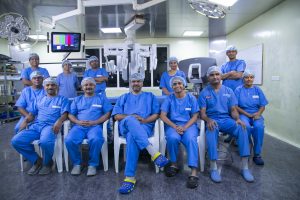
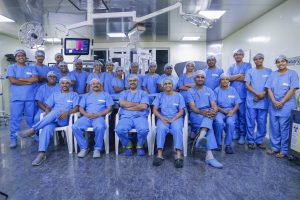
Procedures
When recommended by your surgeon, the system can be used for these procedures:
Cancer
- Surgeries for cancers of Stomach, esophagus(food pipe), colon & Rectum (bowel), kidney, bladder, prostate, uterus andlung
- Surgeries for cancers of head and neck, thyroid and throat
Cardiac
- Coronary artery bypass grafting (CABG) Mitral valverepair
Generalsurgery + Gastro Surgery
- Bariatric (weight-loss) surgery
- Herniarepair
- Gallbladder surgery Colon resection
- Rectalresection
Gynecology Endometriosis resection
- Fibroid removal (myomectomy)
- Benign hysterectomy
- Pelvic organprolapse
Head and neck
- Benign base of tongue resection
Thoracic Lungsurgery
Urology
- Kidney blockagesurgery
- Kidneysurgery
- Prostatesurgery
Frequently asked questions
Does the robot perform surgery?
No. Your surgeon performs surgery. The robotic system translates every hand movement your surgeon makes in real time to bend and rotate the instruments with precision.
Why should I choose robotic-assisted surgery?
People choose surgery with the robotic system for a variety of reasons. If your doctor recommends robotic-assisted surgery for you, be sure to ask why he or she thinks it’s a goodoption.
How do surgeons train to use the robotic system?
Surgeons and their team shove various options for training. In fact, a growing number of residency programs teach about robotic-assisted surgery.
How can I get robotic-assisted surgery?
If your doctor recommends robotic-assisted surgery for your condition, he or she can let you know your next steps.
How can you prepare for surgery?
- One way to learn more about your surgery is to ask your doctor and coreteam questions.
- Whatmedical and surgical options are available for me?
- Which is best for mysituation?
- What are the differences between open, laparoscopic, and robotic-assistedsurgery?
- If you suggest I have surgery, how should I prepare for it?
- Should I get a secondopinion?
- What am I likely to experience aftersurgery?
- What is your surgical training andexperience?
- What is your experience with robotic-assisted surgery?
- What are your patient outcomes?
Important safety information
Surgical Risks
Serious complications may occur in any surgery, including robotic-assisted surgery with do Vinci surgical systems up to and including death. Examples of serious and life-threatening complications, which may require prolonged and/or unexpected hospitalization and/or reoperation, include, but are not limited to, one or more of the following: Injury to tissues and/or organs, Bleeding, Infection, Internal scarring that can cause long-lasting dysfunction or pain. Patients should consider that risks of any surgery also include, but are not limited to, the following: Potential for human error, Potential for equipment failure, Potential for anesthesia complications. Risks specific to minimally invasive surgery, including do Vinci Surgery, include, but are not limited to, the following: Temporary pain and/or nerve injury associated with positioning, Temporary pain and/or discomfort from the use of air or gas in the procedure, a longer operative time and time under anesthesia, the need to convert the procedure to an open surgery, converting the procedure could result in a longer operative time, a longer time under anesthesia, and/or the need for additional or larger incisions and/or increased complications.
Individuals‘ outcomes may depend on a number of factors, including but not limited to patient characteristics, disease characteristics and/or surgeon experience. For Important Safety Information, indications for use, risks, full cautions and warnings, please also refer to
Medical Advice
Patients should talk to their doctor to decide if robotic-assisted surgery with do Vinci surgical systems is right for them. Other options may be available and appropriate. Only a doctor can determine whether robotic-assisted surgery with do Vinci surgical systems is appropriate for a patient’s situation. Patients and doctors should review all available information on both non-surgical and surgical options in order to make an informed decision.
Advantages
Accurate I Small Wounds I Minimal Blood Loss Deeper Reach I Quick Recovery I Extremely Safe
Super Specialties Departments
- Aesthetic / Cosmetic Surgery
- Bariatric & Metabolic Surgery
- Cardiology & Preventive Cardiology
- Cardiothoracic & Vascular Surgery
- Clinical Hematology
- Critical Care Medicine
- Developmental Pediatrics
- Emergency Medicine
- Endocrinology & Diabetology
- Endo Gynecology
- Family Medicine
- Fertility Clinic & Centre for Reproductive Medicine
- Fetal Medicine
- Gastroenterology
- Genetics
- Geriatric Medicine
- Gynecologic oncology
- Heart & Lung Transplant LEADING IN THE REGION | One of the Best in the Country
- Hepato-Pancreato-Biliary Surgery & Liver Transplant
- Home Health Service
- Interventional Radiology
- Maxilo Facial Surgery
- Medical Oncology
- Naturopathy & Yoga
- Neonatology
- Nephrology
- Neurology
- Neurosurgery
- Nuclear Medicine
- Paediatric Surgery
- Pain Medicine
- Palliative and Hospice Care
- Pediatric Cardiology
- Pediatric Oncology
- Physical Medicine & Rehabilitation
- Plastic Surgery
- Pulmonology
- Radiation Oncology
- Rheumatology
- Robotic Surgery
- Suraksha
- Surgical Gastroenterology
- Surgical Oncology
- Urology & Andrology
Find a Doctor!
Request an Appointment
-

Share with us
Click Here -

Organ Transplantation
Click Here
Copyrights © 2025 PSG Hospitals. All Rights Reserved.


